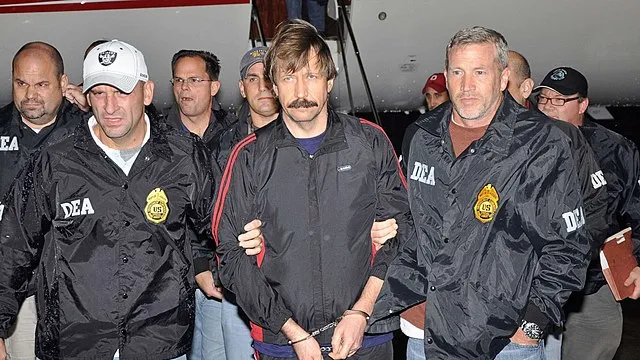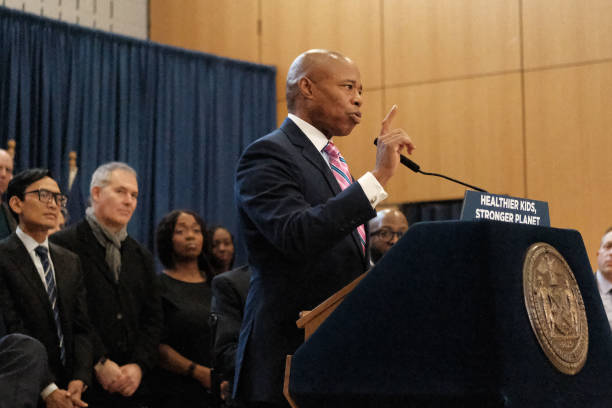As we go to the jury, here’s a cheat-sheet of the case’s two sides
Point One: I would urge anyone who has not seen it to check out the Netflix show on the Murdaugh case. It is more about the Murdaugh family than the murders in-play in the trial. It is… enlightening, even for those who know the case well.
Now, bad character does not mean someone is guilty of murder. BUT: What a family. Holy moley. There are at least five bodies around this crew. Alex Murdaugh was like the Pablo Escobar of South Carolina. This pillar of the community was, in police parlance, a real skell.
Thanks for reading The Ops Desk! Subscribe for free to receive new posts and support my work.
As of this writing, closing arguments are underway in the double-murder trial. Here’s how the case breaks out, for and against:
For The Prosecution
- The most significant evidence is, as I said when the case started, the VIDEOS on Paul’s phone. The Snapchat video shows that Alex Murdaugh changed clothes at some point before the police arrived; the second video (stored on Paul’s phone) has Alex’s voice on it, just a few minutes before the time of death. This matters because Alex denied to the police that he was anywhere near the scene at the time. His defense to this: “Sorry, I’m a chronic liar.”
- The judge allowed in the MOTIVE evidence — specifically, Alex’s financial misdeeds. Judge Newman allowed in testimony showing that Alex stole from everyone he could — in some cases, millions from clients who really needed the money. And the murders occurred on the very day that he was confronted by his law partners on his thefts from the firm. The jury now knows he’s a liar and a thief — and is aware of the motive that he was trying to garner sympathy for his situation (he currently faces about 100 financial and narco charges, most of which he has admitted to on the stand). The implication is also that the criminal and civil cases against Paul for his fatal boating-while intoxicated incident would reveal Alex’s various misdeeds. Not great motive evidence, but better than no motive.
- The botched suicide attempt. The defense made a significant blunder (which, for some reason, has not garnered much attention). After the judge ruled the evidence of the staged suicide attempt — paid for by Alex to Curtis “Cousin Eddie” Smith — would not come in, the defense introduced the idea that Alex was involved in narcotics sales through his relationship with Cousin Eddie. The judge then reversed himself, and allowed the suicide evidence in.
This is huge, b/c in S. Carolina, suicide (or an attempted suicide) can be used as evidence of guilt. So now, Alex is shown to be a liar once again (he initially reported the “suicide” as an attempted robbery). But also: the jury will be instructed that the attempted suicide can be used to infer guilt — and Judge Newman, unlike many others, gives written jury instructions. The jury will be taking that writing back with them into the jury room. Major evidence.
And as for this “narco cartel did the murders” narrative (the “Ozark defense”): preposterous. Aside from the fact that cartels of any sort never want this much publicity, Oxy is not a cartel drug. It’s a pharmaceutical. Pharmacists and doctors get arrested for diverting Oxy illegally. Medellin cartel hitmen do not.
- His demolished alibi. Prosecutor Waters told the case in a chronological order in his calling of the witnesses, likely b/c the timeline is crucial and a bit complex. Through the phone, the witnesses, his car, and the video, Alex has major timeline problems (for instance, a taped interview he gave to the police shows his surprise when he’s told about Paul’s phone video). The evidence shows he was not visiting his sick mom at her home for 40 minutes, as he contends, but for 20 minutes).
His mom’s caretaker also testified that he asked her to say he was with her for 40 minutes, not 20. Essentially, to cover for him. There goes his alibi.
The Defense
- The police mishandled the crime scene. While the first responders appear to have done a reasonable job upon arrival, evidence was introduced that suggests serious errors in the aftermath. For instance, Alex Murdaugh’s brother, John Marvin, testified that he saw a large piece of Paul’s skull, and several shotgun pellets, still on the ground at the crime scene. Another pellet was embedded in a door. This was the day after the murders, as John Marvin literally walked through and around the scene.
The police also did not do a great search that night at Alex’s home on the Moselle compound (the drain was not taken, for instance, to look for blood traces). And it was not until three months later that they searched Alex’s mother’s house — where he says he was visiting that night.
- The police are not to be trusted. A basic of criminal defense is that, when in doubt, dirty up the police and the procedure. In this case, aside from the crime scene handling, the defense was able to show that one of the officers gave contradictory testimony between the grand jury and the actual trial regarding blood spatter (important evidence). This made the cop a liar — which, in a trial, can serve to make all the cops liars.
- Missing evidence. The two murder weapons — a shotgun and an AR-15-style rifle — have not been recovered. Nor has the clothing that Alex was shown to be wearing in the Snapchat video roughly an hour before the murders.
Jurors want a murder weapon — and we don’t have one here. And according to testimony, the police never even asked Alex for the location of that clothing, at any point. Even if he had taken it off due to sweating — as he contends — where is it now? No one knows.
And if it is the state’s theory that the guns and clothing were secreted at his mother’s house that night… Alex had three months to retrieve all that and dispose of it. Blunder.
- The shooter was 5’4”/there were two shooters. According to one forensic expert — whose testimony was pretty compelling — the angle of the shots revealed a shooter who was so much shorter than Alex, it couldn’t have been him. Another compelling defense witness contended that there must have been two different shooters, due to the use of two different guns. Alex is 6’ 4”. The scenario of him handling two different guns at the scene, shooting his son and wife twice each in succession, from the angle a very tall man would shoot from… suddenly looked unlikely.
The Mistakes
The Prosecution
Over-focusing on the financials. Prosecutor Waters spent so much time focusing on Alex’s financial skullduggery, the case felt at times like a tax evasion case. The problem with that is that it is already well-established that Alex is a thief and a liar. And the relentless drumbeat of Alex’s scammery became, simply, boring — something one never wants to do to a jury.
Waters has shown Alex to be a major lowlife — undeniably. But has he shown him to be the murderer? More of a focus on the contradictions in the timeline, in Alex’s alibi, his changing story, etc, might have been time better-spent.
The Defense
I see two major blunders (and almost three):
- The Defense allowed Alex to give three interviews to law enforcement before he was arrested. Now, Alex may have, through arrogance or innocence, insisted on it. But these three interviews have come back to haunt him, as his story has had to change during the trial as conflicting evidence was introduced.
- The Cousin Eddie/suicide blunder, covered above. This was playing with fire, and whether other lawyers consider this an “abuse of discretion” by the judge (and therefore, appeal-able) or not… it was flying very close to the sun. Mistake.
- In a heated exchange with a Murdaugh law firm associate, defense attorney Harpootlian got so angry, he barked at the witness, “So do you think he did it?” A basic of questioning a witness is that you NEVER ask a question you don’t know the answer to. The witness didn’t answer — and the Defense dodged a bullet. Because if Alex’s law partner had said, “Of course — who else?”… well, that would’ve left a mark.
The Wildcard
Alex took the stand. Did the jury believe him?
Predictions
- At this writing, as we near the case’s end, your narrator would vote guilty. But I am predicting, as I have for some weeks now: A hung jury, and so a mistrial.
- The state will then re-try the case, relatively quickly. And we will have a reprise of this entire thing.
- In the media, we will begin hearing more about the 2018 death of the Murdaugh family housekeeper, Gloria Satterfield (if you are not familiar with it, see the Netflix show). The case has been re-opened. Meaning: We could get another Alex Murdaugh murder trial!
A Parting Thought
Maggie Murdaugh made the 911 call regarding Gloria Satterfield falling down the stairs. She was there, and likely knows what occurred.
As the Satterfield family lawyer, Alex stole over $4 million from the insurance settlement in the Satterfield case — money that was meant for the deceased’s family.
Recently, the Murdaughs were still somehow operating at a loss (which I don’t understand), and Maggie was agitating for the hiring of a forensic accountant. She wanted to know what the hell was going on.
She had also become aware of his drug use, and was (reportedly) seeing a divorce lawyer.
A wife who is about to file for divorce, give you up on all sorts of criminal activity, and paint you, a pillar of the community, as a drug addict, thief, and maybe even a murderer?
And a son whose pending criminal and civil cases are about to expose much of the same?
The TRUE motive here?
Speculation from your humble narrator — nothing more.
Thanks for reading The Ops Desk!









